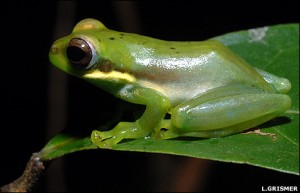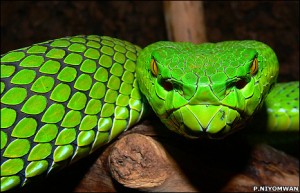For more than 200 years, countless scientists have devoted themselves to the task of elaborating and cataloguing in minute detail the extraordinary diversity of life on this planet.
Not all of it’s been glamorous work. Some have spent 40 years studying the varieties of a particular weed; others a career describing barnacles.
But despite the enormous efforts applied to the task, it is astonishing to take stock of how little we truly know about life’s diversity.
This week the WWF released a report showing that over 1000 new species have been discovered in the Mekong River delta in just an initial survey. These include striking animals like a green pit viper. a tree frog with turquoise bones, a cyanide-infused giant pink millipede, and a strange rodent thought to be extinct for the past 11 million years.
Many pockets like this of entirely unexplored flora and fauna do still exist, especially in remote and unindustrialised areas of the globe. By some estimates, as many as 90% of species remain unidentified.
How far have biologists gotten? Around 2 million species have been identified to date, and several pioneering projects are currently underway on the web to try to consolidate this knowledge and make it accessible in new ways. The most publicised is the Encyclopedia of Life headed by Harvard biologist E.O. WIlson. It aims to create a web page for every known species. It’s initial ambitions were even greater, but accomplishing its current goal would be a remarkable feat in its own right. A similar project, initiated by taxonomists worldwide, is the Catalogue of Life, which is doing a lot of the difficult groundwork of sorting out the truly new species from the ones that have been described several times over in different journals with different names over the decades. A further initiative, the Tree of Life, aims to clearly present the evolutionary relationships of species to each other within the context of the phylogenetic tree.
All of these compendiums remain a long way from completion, and there are still untold millions of creatures  — especially those in the ocean depths and beneath the microscope — that won’t be included because they remain entirely unknown to science.
— especially those in the ocean depths and beneath the microscope — that won’t be included because they remain entirely unknown to science.
Hopefully we will one day have a universally accessible resource that provides information on every living thing. But in the end, that’s just one dimension of our understanding of life — the naming and describing of the unique quirks and features of individual lifeforms. A large part of what we don’t know involves the complex interactions between species — what kinds of relationships are necessary to form ecosystems and sustain life.
Decisions humans make have unintended consequences on living systems all the time. New research this week points to the economic cost of reducing biodiversity in crop fields for the production of biofuels. Vast monocultures of corn eliminate habitat for beneficial insects, which in turn allows pest insects to thrive and feed on other crops.
Iron seeding of the oceans causes phytoplankton blooms that can be viewed from space, but ocean fertilisation for the purpose of sequestering carbon could have any number of complex knock-on effects in marine ecosystems. Scientists have called for a moratorium on commercial exploitation while further research can be urgently undertaken.
The acquisition of knowledge is a slow, painstaking process. The evolution of human activities for economic gain continues at a breakneck pace. Much of what we seek to learn about the diversity of life may be gone before we get around to noticing.
